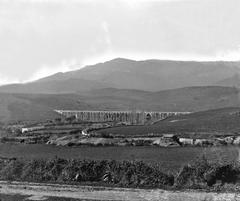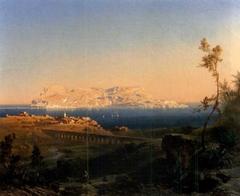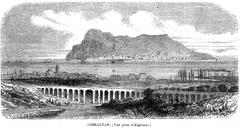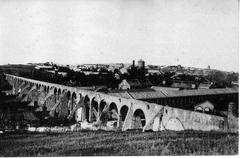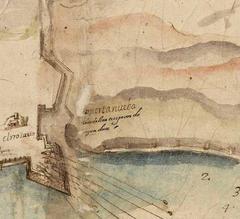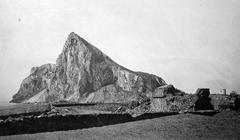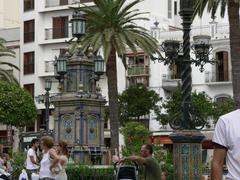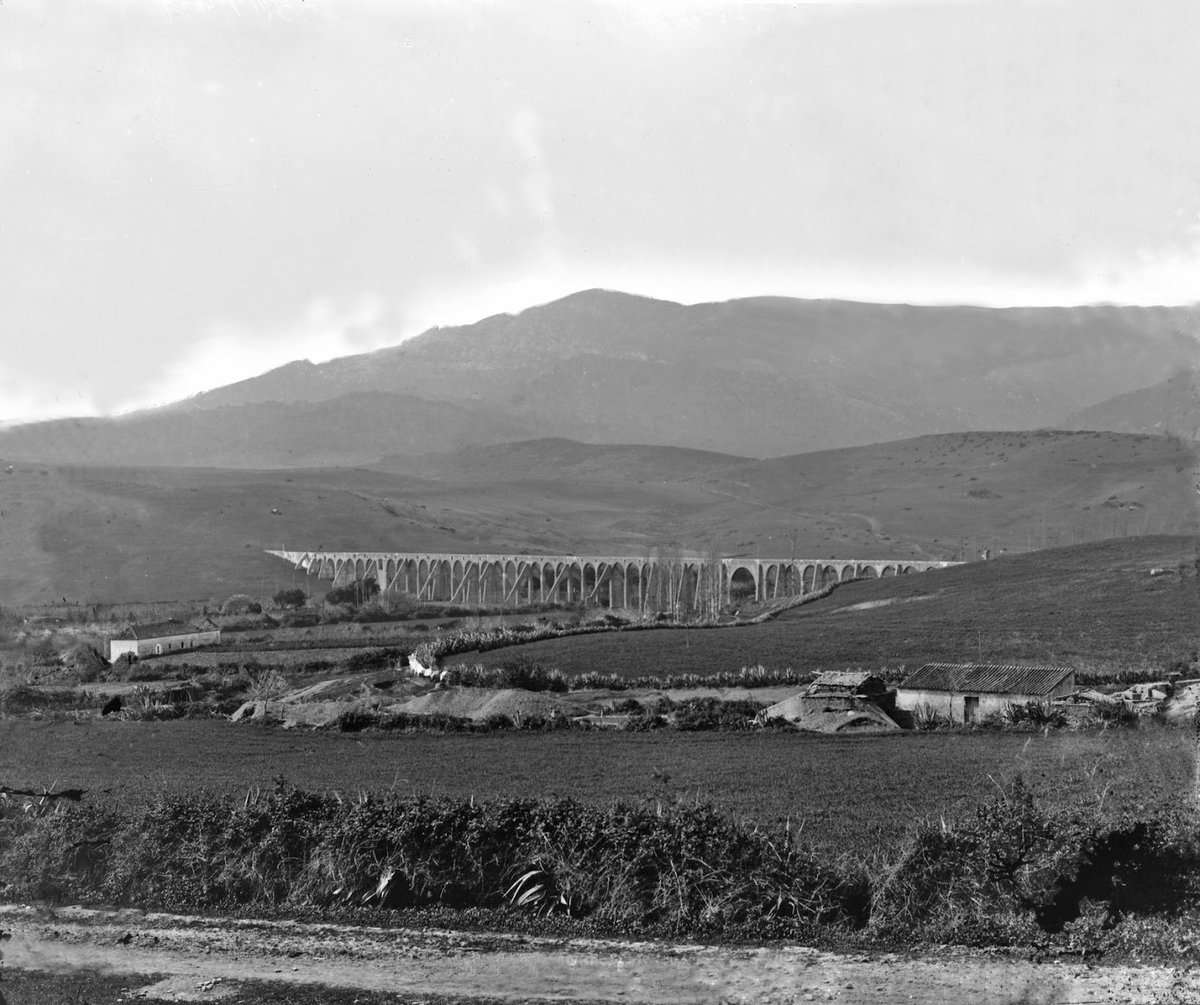
Visiting Sendero Rio de la Miel: Hours, Tickets, and Tips
Publication Date: 23/07/2024
Introduction to Sendero Rio de la Miel
Sendero Rio de la Miel, located in Algeciras, Spain, is a captivating trail offering a unique blend of historical, ecological, and cultural experiences. This hidden gem is known for its rich history that spans several millennia, from prehistoric times through the Roman, Moorish, and Christian eras, to modern-day conservation efforts. Nestled within the Los Alcornocales Natural Park, the trail provides a habitat for diverse flora and fauna, making it an ideal destination for nature lovers and history enthusiasts alike. Visitors can explore various historical landmarks, such as Roman aqueducts, Moorish watchtowers, and medieval churches, while enjoying the scenic beauty of the lush valley. This comprehensive guide aims to provide all the necessary information for a memorable visit to Sendero Rio de la Miel, including historical context, visitor tips, and nearby attractions. For more details, visit the official tourism website of Algeciras.
Contents
- Introduction
- Historical Background of Sendero Rio de la Miel
- Ancient Roots and Early Inhabitants
- Roman Influence
- Moorish Era
- Reconquista and Christian Rule
- Modern Era and Conservation Efforts
- Historical Landmarks Along the Trail
- Roman Aqueduct
- Moorish Watchtowers
- Medieval Churches
- Visitor Information
- Visiting Hours and Tickets
- Travel Tips
- Nearby Attractions
- Parque Natural Los Alcornocales
- Plaza Alta
- Bahía Park
- Accessibility
- Cultural Significance
- Preservation and Education
- FAQ
- Call to Action
- Conclusion
Historical Background of Sendero Rio de la Miel
Ancient Roots and Early Inhabitants
The area surrounding Sendero Rio de la Miel has a rich history dating back to prehistoric times. Archaeological findings suggest that the region was inhabited by early humans during the Paleolithic era. The lush landscape and abundant water sources made it an ideal location for early settlers. Evidence of these ancient inhabitants can be found in the form of cave paintings and stone tools discovered in nearby caves.
Roman Influence
During the Roman period, the region of Algeciras, known as Iulia Traducta, became an important settlement. The Romans recognized the strategic significance of the area due to its proximity to the Strait of Gibraltar, a crucial maritime passage. The Rio de la Miel, or “Honey River,” was likely named by the Romans due to the abundance of wildflowers and bees in the area, which produced high-quality honey. Remnants of Roman infrastructure, such as roads and aqueducts, can still be found in the region, indicating the extent of Roman influence.
Moorish Era
The Moorish conquest of the Iberian Peninsula in the 8th century brought significant changes to the region. Algeciras, known as Al-Jazira Al-Khadra during the Moorish period, became a vital port and trading hub. The Moors introduced advanced agricultural techniques, including irrigation systems that utilized the waters of the Rio de la Miel. The lush valley became a center for the cultivation of various crops, including citrus fruits and olives. The remnants of Moorish architecture, such as watchtowers and fortifications, can still be seen along the trail.
Reconquista and Christian Rule
The Reconquista, the Christian reconquest of the Iberian Peninsula, culminated in the capture of Algeciras by Alfonso XI of Castile in 1344. The region underwent significant changes as it was integrated into the Kingdom of Castile. The Rio de la Miel continued to play a crucial role in the local economy, supporting agriculture and providing water for the growing population. The Christian rulers built churches and fortifications, some of which still stand today, offering a glimpse into the medieval history of the area.
Modern Era and Conservation Efforts
In the modern era, the area around Sendero Rio de la Miel has been recognized for its natural beauty and ecological significance. Efforts to preserve the unique flora and fauna of the region have led to the establishment of protected areas and hiking trails. The trail itself offers visitors a chance to explore the rich history and natural beauty of the region, with informative signs and markers highlighting significant historical sites along the way.
Historical Landmarks Along the Trail
Roman Aqueduct
One of the most notable historical landmarks along the Sendero Rio de la Miel is the remnants of a Roman aqueduct. This ancient structure once transported water from the Rio de la Miel to nearby settlements, showcasing the engineering prowess of the Romans. Visitors can see the remains of the aqueduct’s arches and channels, providing a tangible connection to the region’s Roman past.
Moorish Watchtowers
Scattered along the trail are several Moorish watchtowers, built during the period of Islamic rule to protect the region from invaders. These towers offer panoramic views of the surrounding landscape and the Strait of Gibraltar. They serve as a reminder of the strategic importance of the area and the rich cultural heritage left by the Moors.
Medieval Churches
The trail also passes by several medieval churches, built during the Christian reconquest of the region. These churches, with their distinctive architecture and historical significance, provide insight into the religious and cultural changes that occurred during the medieval period. Some of these churches are still in use today, offering a glimpse into the enduring legacy of the region’s Christian heritage.
Visitor Information
Visiting Hours and Tickets
Sendero Rio de la Miel is accessible year-round. While there are no specific visiting hours, it is advisable to visit during daylight to fully appreciate the historical landmarks and natural beauty. Entry is free, but guided tours may have associated costs. For the latest information on guided tours and ticket prices, visit the official tourism website of Algeciras.
Travel Tips
- Wear comfortable hiking shoes and bring water, especially during the summer months.
- Check weather conditions beforehand to ensure a pleasant visit.
- Respect the natural environment by staying on designated trails and not disturbing wildlife.
Nearby Attractions
In addition to Sendero Rio de la Miel, Algeciras offers several other attractions worth visiting:
- Parque Natural Los Alcornocales: A natural park known for its diverse flora and fauna.
- Plaza Alta: The central square of Algeciras, featuring beautiful tiles and a lively atmosphere.
- Bahía Park: A family-friendly water park with various attractions and pools.
Accessibility
Sendero Rio de la Miel is accessible to visitors of all ages. However, the terrain can be uneven in areas, making it challenging for those with mobility issues. It is recommended to check with local guides or the tourism office for more accessible routes and assistance if needed.
Cultural Significance
The historical significance of Sendero Rio de la Miel extends beyond its physical landmarks. The trail is a testament to the diverse cultures and civilizations that have shaped the region over millennia. From the early human settlers to the Romans, Moors, and Christians, each group has left an indelible mark on the landscape and culture of the area. The trail offers visitors a unique opportunity to explore this rich tapestry of history while enjoying the natural beauty of the Rio de la Miel valley.
Preservation and Education
Efforts to preserve the historical and natural heritage of Sendero Rio de la Miel are ongoing. Local authorities and conservation organizations have implemented measures to protect the area’s unique flora and fauna, as well as its historical landmarks. Educational programs and guided tours are available to help visitors understand the historical significance of the trail and the importance of conservation efforts. These initiatives ensure that future generations can continue to enjoy and learn from this remarkable historical site.
FAQ
Q: What are the visiting hours for Sendero Rio de la Miel?
A: Sendero Rio de la Miel is accessible year-round, but it is advisable to visit during daylight hours.
Q: Are there guided tours available at Sendero Rio de la Miel?
A: Yes, guided tours are available. For more information, visit the official tourism website of Algeciras.
Q: Is Sendero Rio de la Miel accessible for people with mobility issues?
A: The terrain can be uneven in areas, making it challenging for those with mobility issues. It is recommended to check with local guides or the tourism office for more accessible routes and assistance if needed.
Q: Are there any nearby attractions to visit?
A: Yes, nearby attractions include Parque Natural Los Alcornocales, Plaza Alta, and Bahía Park.
Call to Action
For more information and to stay updated, visit the official tourism website of Algeciras. Download the Audiala mobile app, check out other related posts, and follow us on social media for the latest updates and travel tips.
Conclusion
The Sendero Rio de la Miel in Algeciras, Spain, is a trail of immense significance, offering a unique blend of historical, ecological, and cultural value. Whether you’re a history buff, nature lover, or simply looking for a peaceful escape, this trail has something to offer. By following the tips and guidelines provided, visitors can ensure a memorable and enriching experience while helping to preserve this precious natural resource for future generations.
Sources and Further Reading
- Exploring the Historical Significance of Sendero Rio de la Miel in Algeciras - Visiting Hours, Tickets, and More, 2024, official tourism website of Algeciras
- Exploring Sendero Rio de la Miel - Visiting Hours, Tickets, and Historical Sites in Algeciras, 2024, official tourism website of Algeciras
- Complete Guide to Visiting Sendero Rio de la Miel, Algeciras - Best Times, Tips, and Nearby Attractions, 2024, official tourism website of Algeciras
